As I’m writing this, I’m gearing to move out of my apartment and into a new, slightly bigger one (the better to accommodate my ever-increasing manga collection, right?), and I’m surrounded by boxes and boxes of my stuff. There’s nothing that makes you want to consider a life of asceticism quite like moving. May has been very much a transitional month for me, in more ways than just a change of address.
I already wrote a little bit about my adventures at TCAF. That sojourn sparked a lot of excitement and motivation within me, so hopefully I’ll be stepping up on my manga writing even more in the aftermath — gotta ride that wave of inspiration for as long as possible!
And something I haven’t mentioned yet is that I have contributed a short piece on manga basics to the upcoming CBLDF Presents Selling Comics: The Guide to Retailing and Best Practices in the Greatest Modern Art Form. I am so, so excited to have been asked to do this; about six years ago, CBLDF and Dark Horse collaborated on a similar book all about manga that featured writing from many intelligent, excellent writers whom I greatly admire. And since I have a lot of strong feelings about comics retail and selling manga in particular, this felt like an excellent first foray into comics print publication for me.
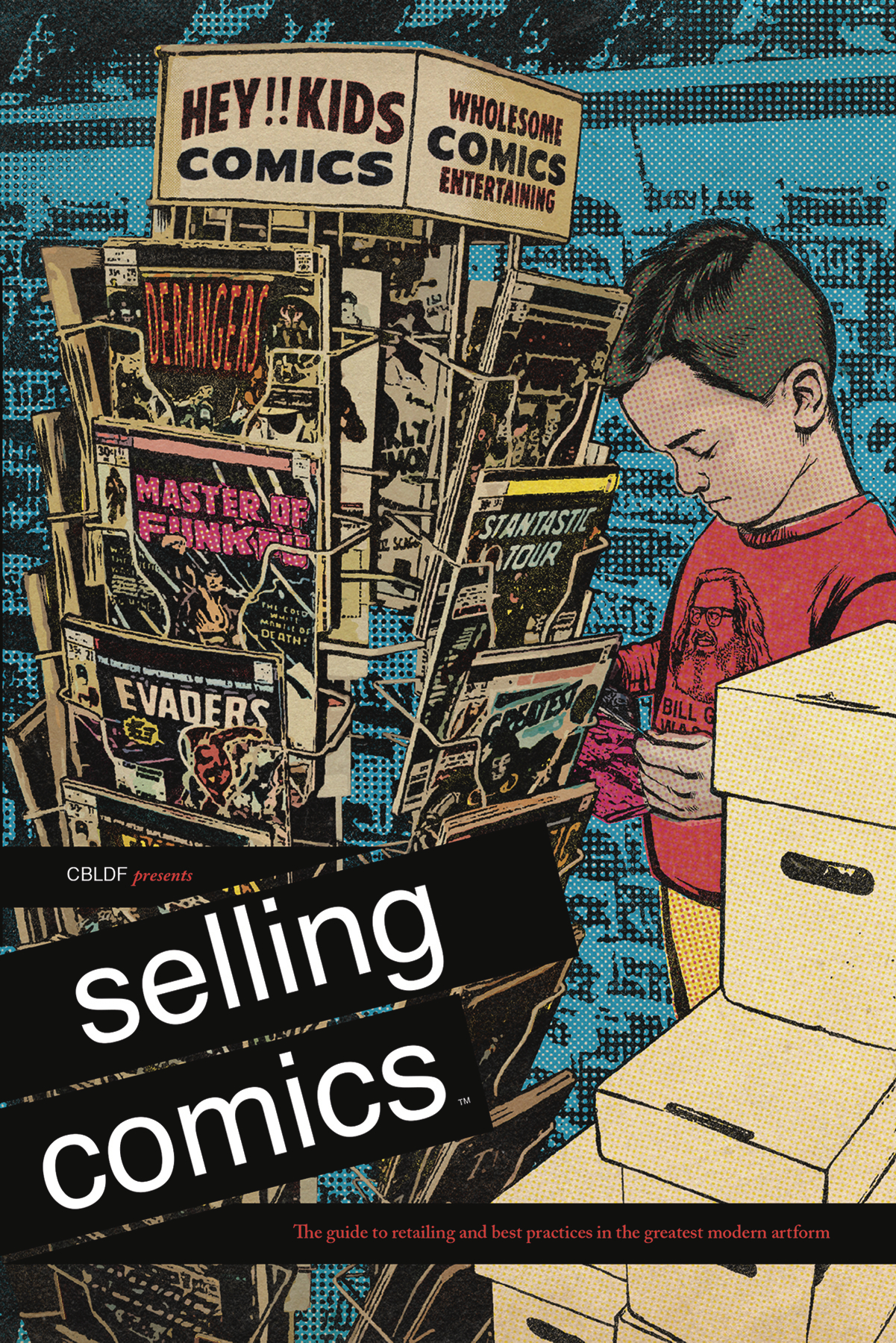
In between all the travel and writing, I did get a chance to read some really excellent books of all stripes. As usual, it’s time for me to highlight my favorite comics for the month!
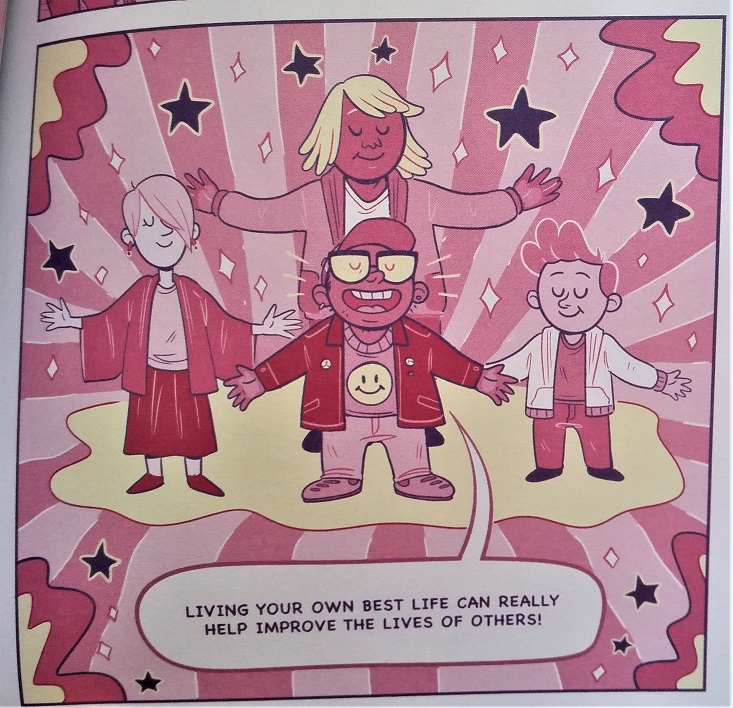
A Quick & Easy Guide to Queer & Trans Identities, by Mady G & J.R. Zuckerberg — published by Limerence Press
Last year, Oni Press’s Limerence imprint published A Quick & Easy Guide to They/Them Pronouns, which I thought was absolutely excellent, and I was gratified that we sold a ton of copies at Comicopia. With its friendly, non-judgmental tone and low price point, it was a really nice, gentle introduction to the topic of non-binary genders for people of all backgrounds. And so, I was very excited when Queer & Trans Identities was announced. It’s slightly less auto-biographical, but equally kind in its delivery with the added bonus of covering a lot of ground succinctly. There are two “stories” going on at the same time: A snail is teaching other snails all about different human identities and expressions, and a fantasy world populated by “sproutlings” shows the identity progression of one of its citizens. The artwork is adorable, bright, and fun, and the back matter encourages readers to create their own “sprout-sona” and design matching friendship jackets. I think what I enjoyed most about this guide was its dedication to inclusivity, and its patient guidance through myriad identities and sexualities — and a wonderful chapter on forging healthy, caring relationships that everyone, regardless of gender or sexuality, could use. I think this is a wonderful addendum to any coming-of-age talk that a parent or teacher might have with a young person, and it provides resources for further research as well. Growing up, I had to figure out my own ideas of gender and sexuality without the guidance of any adult queer person, and even though I have no real regrets or concerns about my own path, I think this is an endlessly valuable guide that I and my peers could have really benefited from.
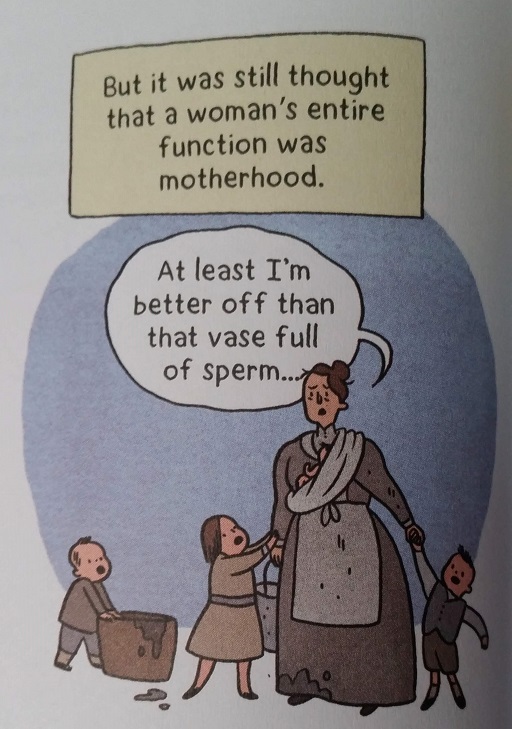
Kid Gloves: Nine Months of Careful Chaos, by Lucy Knisley — published by FirstSecond
It is a really, really scary time to be a person with a uterus in the United States right now. Abortion rights are being overturned state by state, causing people like me — even those of us who want to get pregnant and have children! — to worry about our autonomy and our value in the eyes of the law. So it was a really interesting time to decide to read Lucy Knisley’s autobiographical account of her very high-risk pregnancy — a book I had been patiently waiting to read since it came out, but scores of people already had on hold at my local library. This was actually the first of Knisley’s books I’ve ever read, though I do follow her avidly on Instagram, and it was worth the wait.
From the time most girls are born, there is an emphasis on them becoming mothers, whether intentionally or by accident. There is a lot of burden placed on girls and women to have babies and also to prevent them, lest they be marked “fast” or “easy.” But what I think doesn’t get talked about quite enough is how complicated and often dangerous pregnancy is — or how little control a pregnant person has over what happens to their body and their baby, in the grand scheme of things. So I appreciated Knisley’s openness about her two miscarriages, her extraordinary battle with constant morning sickness, and her concerns about pre-eclampsia that went unaddressed by her doctor. All these deeply personal and evocative anecdotes are peppered with chapters on the history of pregnancy and gynecological medicine, which is a personal interest of mine anyway (I love the Sawbones podcast!). And though she struggled so fiercely through her pregnancy, it is so clear how much she loves her son, how grateful she is for his presence in her life. This is an excellent read for our times, a good reminder that pregnancy and motherhood should never be forced upon a person, that it is a great risk and a great responsibility.
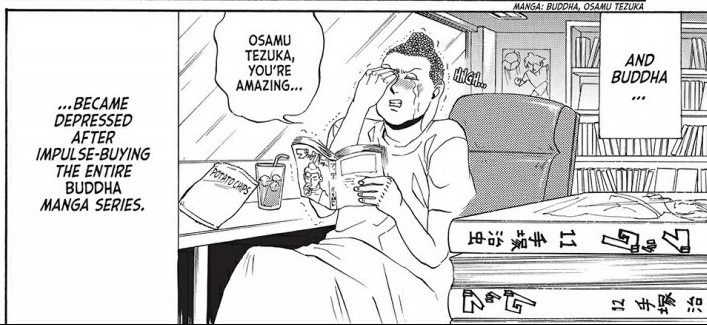
Saint Young Men, Volume 1, by Hikaru Nakamura — published by Kodansha (digital only)
I feel as though I’ve been waiting for this manga all my life. It’s commonly known that mangaka Hikaru Nakamura has been hesitant for Saint Young Men to have an English-language release, for fear that it might stir up some religious controversy. But as a proudly lapsed Catholic, I am ecstatic that it has finally made it Stateside. I am a huge fan of religious comedies; my favorite novel is Terry Pratchett and Neil Gaiman’s Good Omens, and Dogma is pretty high up on my list of favorite films. So the premise of Jesus Christ and Siddhartha Gautama kicking it in a tiny apartment in Japan just for fun is exactly in my wheelhouse. I appreciate anything that humanizes the figures that people worship, that allows common people to identify with these holy beings. I think that at the root of spirituality is the understanding that at our most basic, we are all connected to one another. And somehow, I think that comedy often conveys this idea better than any fire and brimstone sermon, catching us with our hearts and minds more open than they would be when we’re expecting to be lectured. Nakamura has a knack for finding the little things that elicit the big laughs — like how Jesus is so enamored of the fact that teenage girls think he looks like Johnny Depp, or how Buddha loves Osamu Tezuka (and especially Tezuka’s biography of Buddha himself). She’s also extremely adept at illustrating extreme expressions and inserting funny little tidbits, like the text on the T-shirts that Buddha screen-prints for the two of them. I really hope that this volume sees a lot of success so that maybe a print version will follow along soon!
It looks like I covered some heavy territory this month — gender identity, pregnancy and parenthood, and religion. But I was left with feelings of immense peace and gratitude after reading all these books, and I was able to reflect on my own ideas and beliefs without feeling judged or confused. It’s a rare thing, in our world today, to come away from hot-button issues feeling refreshed rather than completely exhausted and demoralized — and trust me, I’ve spent plenty of time there lately, as well. I always appreciate when reading can both be informative and act as a refuge, as a tool of empowerment to be wielded in my day-to-day life. We are very lucky to see these kinds of works being published, and I can’t wait to see what else we can look forward to in the future.
humor
Tokyo Tarareba Girls & the Fear of Feeling Unwanted
Just a couple weeks ago, I talked about how much I had been enjoying the Wotakoi manga, and how I yearned for more josei manga that centered around the relatable struggles of women’s everyday lives. I had forgotten that the print edition of Akiko Higashimura’s Tokyo Tarareba Girls would be coming out so soon, and it is another shining example of exactly what I’ve been looking for.
I want to preface the meat of my review by saying that I am very different from the story’s protagonist, Rinko. I am 28 years old, happily married, and while I’m still trying to figure out my career, I am at least heading in a direction that feels fruitful. And even if all that weren’t the case, I very strongly do not ascribe to societal ideas about appropriate ages to marry, have children, etc. But a lot of women do, and that external pressure can be suffocating.
Rinko, at 33, is an established screenwriter for various webseries dramas. She is not only unmarried, but has also not really been dating for quite some time. Our story starts with her 33rd birthday and the announcement that Tokyo will be hosting the 2020 Olympics. Suddenly, she feels that she doesn’t want to remain unwed once the Olympics start, so she’s given herself a deadline to find a husband.
The only problem is, she’s not working particularly hard to meet anyone new! She hopes that a man she works with who had shown interest in her ten years previously might be interested again, but he has moved on to her much younger, pink-haired coworker, leaving Rinko feeling old and unwanted. At the pub she and her friends frequent, they encounter a rude young man who tells them plainly that they’re wasting time getting drunk, and that their activities are less like a “girls’ night,” and more like an “old maids’ gossip circle.” He is the one who first calls them “”what-if” women, and while he’s extraordinarily rude, something about his words rings true for Rinko. When he shows up to audition for one of her dramas and complains about the script, she loses her position on that series and begins to truly feel that she is unwanted.

And this, for me, is what Tokyo Tarereba Girls is about: the fear of being unwanted once you are no longer young, pretty, and willing to please. There is an insidious idea that women are no longer interesting once they become — pardon my language — unfuckable. In fact, Rinko loses her position to a younger woman who she discovers is sleeping with the producer, causing Rinko to spiral into a deep depression. At the close of the first volume, the rude young model/actor, Key, offers her a way to get ahead.
Tokyo Tarereba Girls has been available in English digitally through Kodansha for some time now, so I’ve seen a fair amount of single panels or discussions of its message and meaning (without completely spoiling myself, of course). It is my feeling that the story will go on to redefine Rinko’s position that she needs to be married to one where she learns to focus on herself and her goals, without buckling to outside pressure. At least, that’s what I hope!

In many ways, Tokyo Tarereba Girls isn’t a happy story. So many women (and I’m sure folks of other genders, as well) feel adrift in a sea of societal expectation. There are so many thinkpieces out there on millennials “choosing” not to buy houses or have children; even if you have no interest in bending to the whims of society, it’s hard to avoid acknowledging that you don’t tick off certain boxes. And yet, Higashimura delivers this anxiety wrapped in the sense of humor that set Princess Jellyfish apart before; there is no attempt to show Rinko and her friends as beautiful paragons of virtue who are underserving of their fate. They are all normal women, with normal lives and normal stresses. They are crass and selfish, women who we might not want to be, but who we recognize in ourselves and in our friends and family.
It is tempting to claim that women like Rinko, who obsess over age, desirability, and the perceived expectations of others, are silly and shallow. Indeed, it is not uncommon to see this kind of criticism even coming from other women. So it was rather refreshing to see, at the back of this first volume, Higashimura’s own beliefs about marriage — essentially, that she fell into it by accident and that she doesn’t put too much weight on its merits. She has pushed back against her friends for their own fears, encouraging them to eschew their anxieties and just live their lives…but then she has also crafted this story highlighting those very real anxieties. She cannot relate to her friends in real life, but she can understand the concerns they have enough to show readers their value.
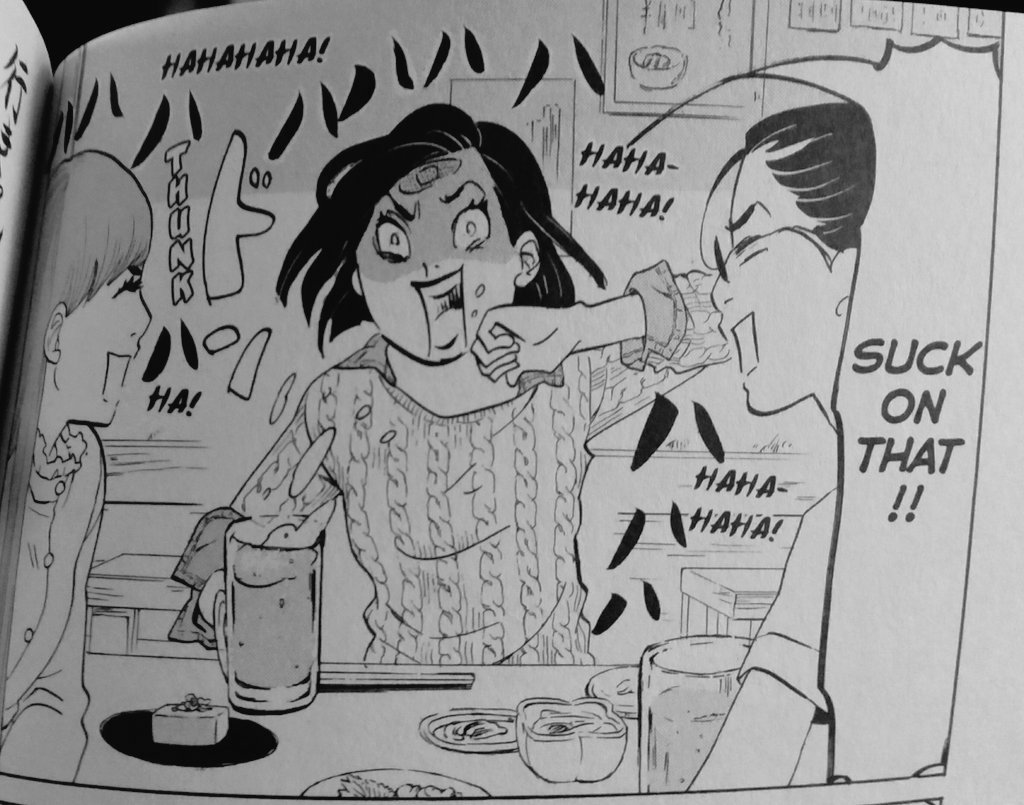
Since manga began legal English-language circulation, there have always been stories centered around adult men and their struggles and fantasies. It is gratifying to know that the girls and women who facilitated the huge manga boom of the late 90s and early aughts now have manga that have grown up with them, with protagonists their age who also may feel adrift, alone, and unwanted as they age and change. I believe that the manga market is ready for more josei and has been for a while now.
Because I’m terrible at keeping up with digital releases, I’m looking very forward to continuing Tokyo Tarareba Girls as it comes out in print. I know that she’s been acknowledged extensively in Japan, but I really hope to see Akiko Higashimura recognized for her genius in the North American market. To that end, I encourage everyone to try her work, whether it be this or Princess Jellyfish. She captures the struggle of being a woman from so many different perspectives and with such sensitivity, without sacrificing either wit or drama. She truly is a spectacular creator.